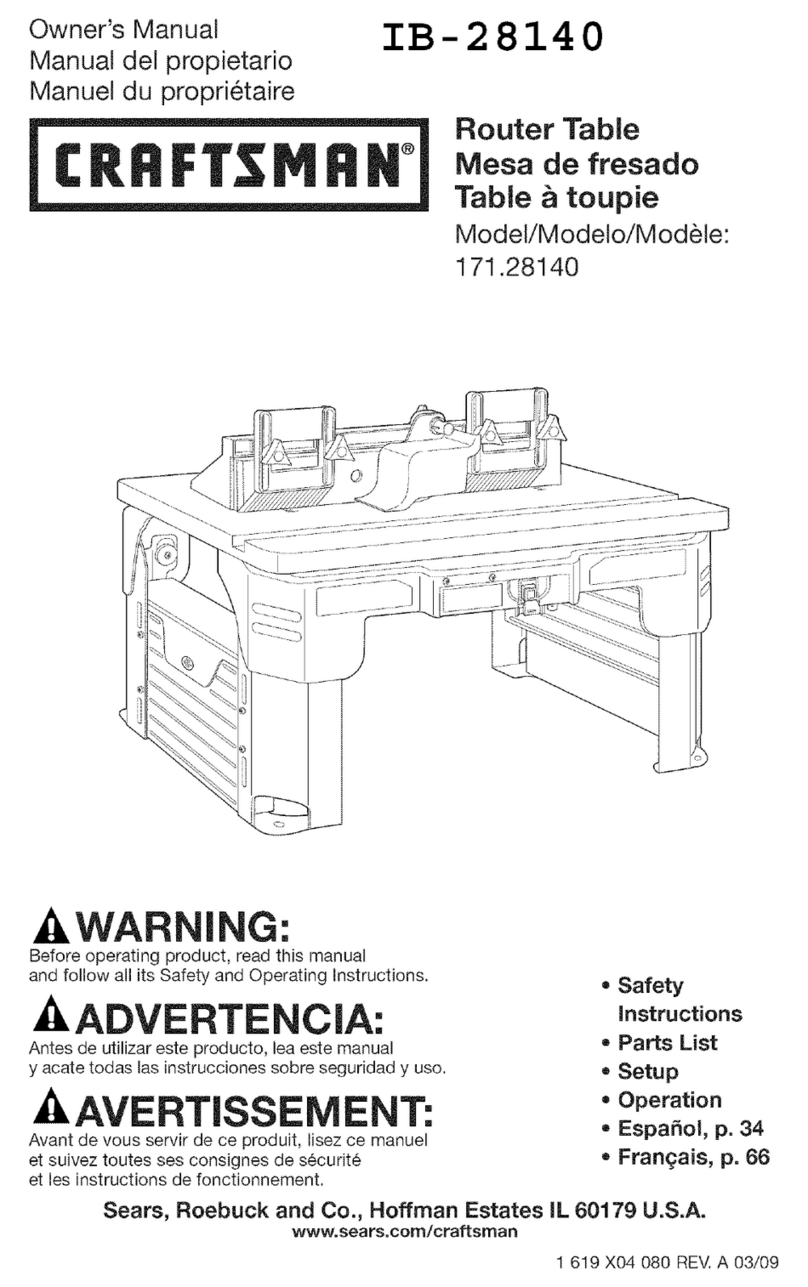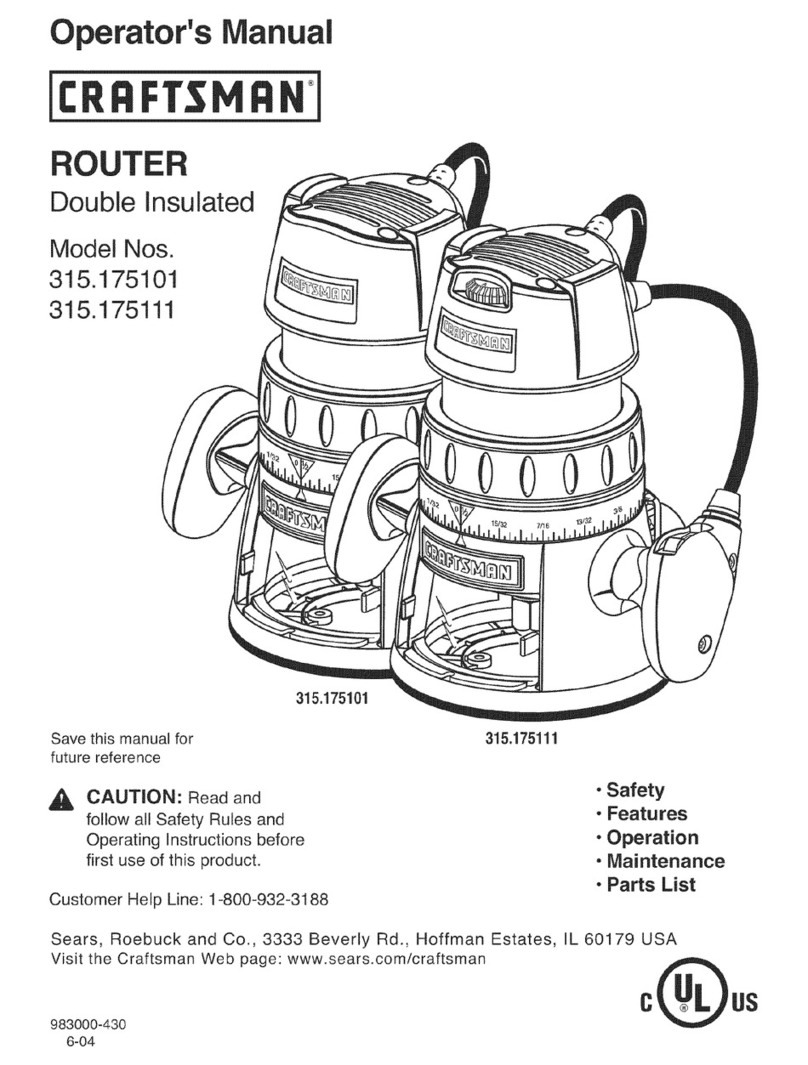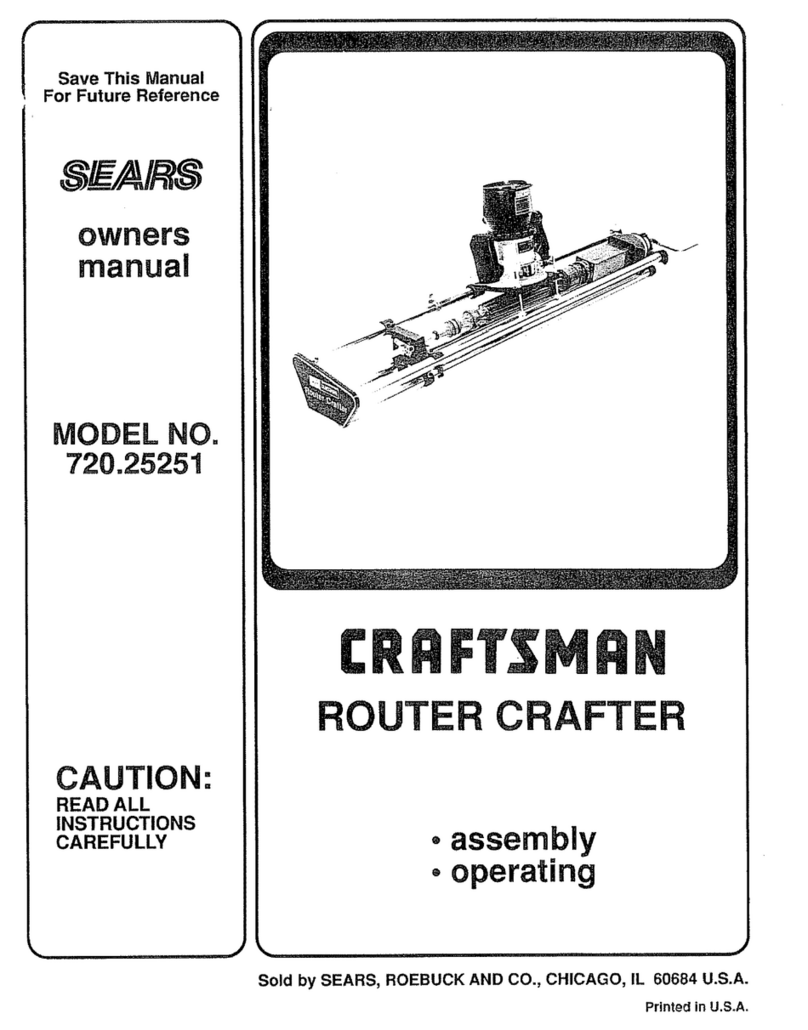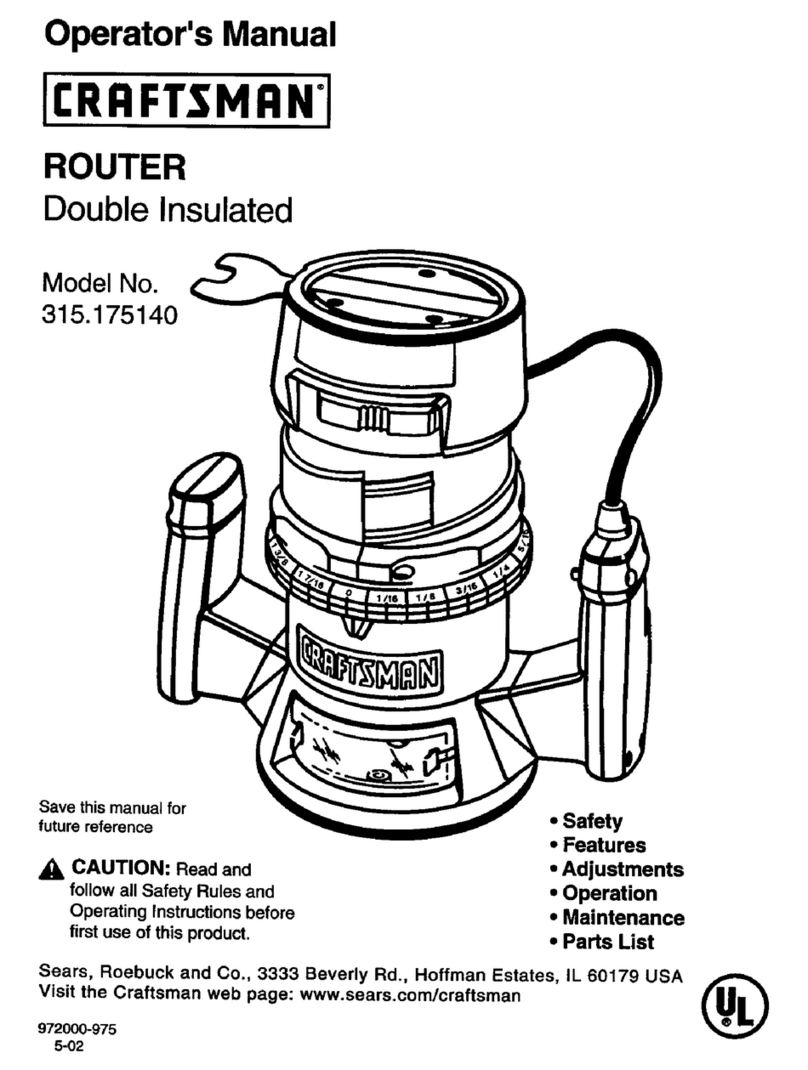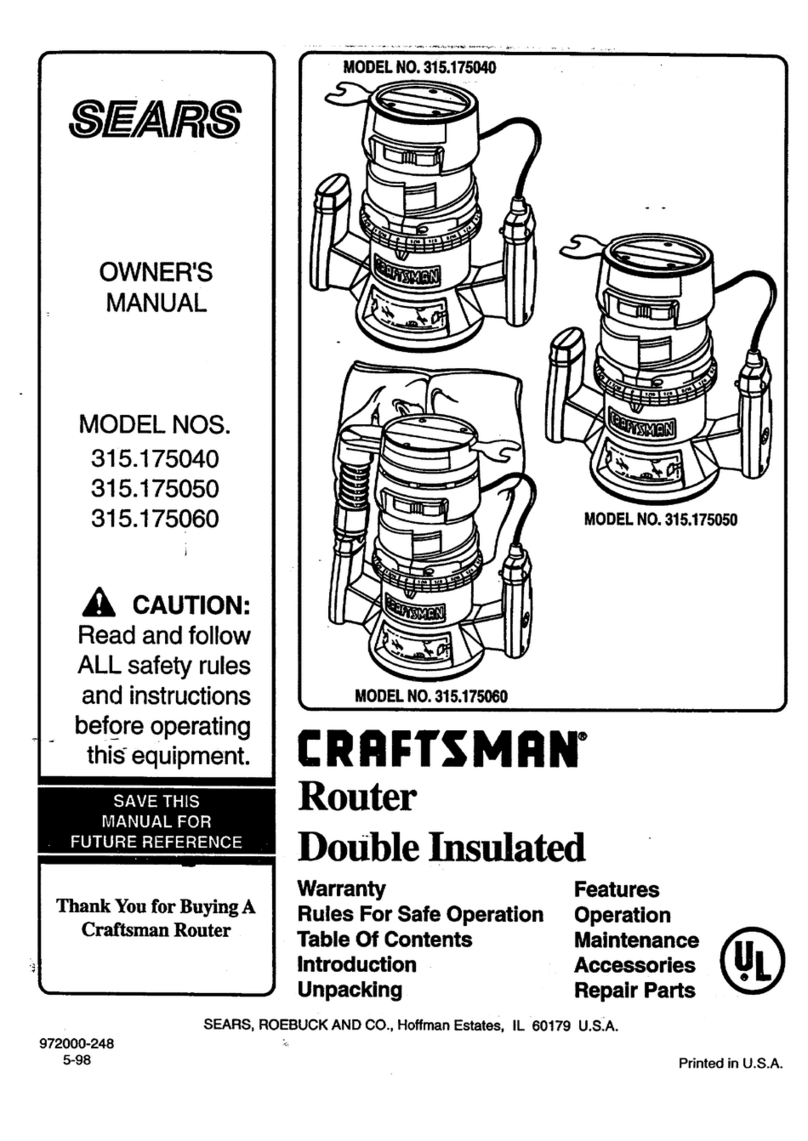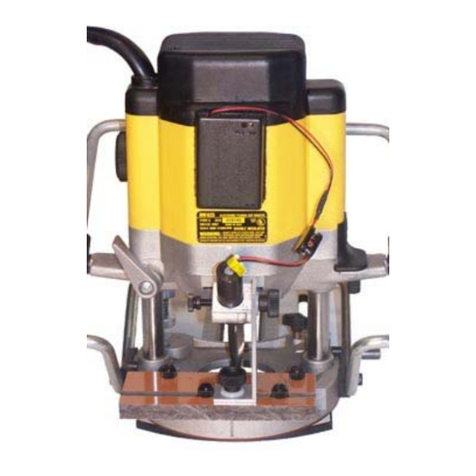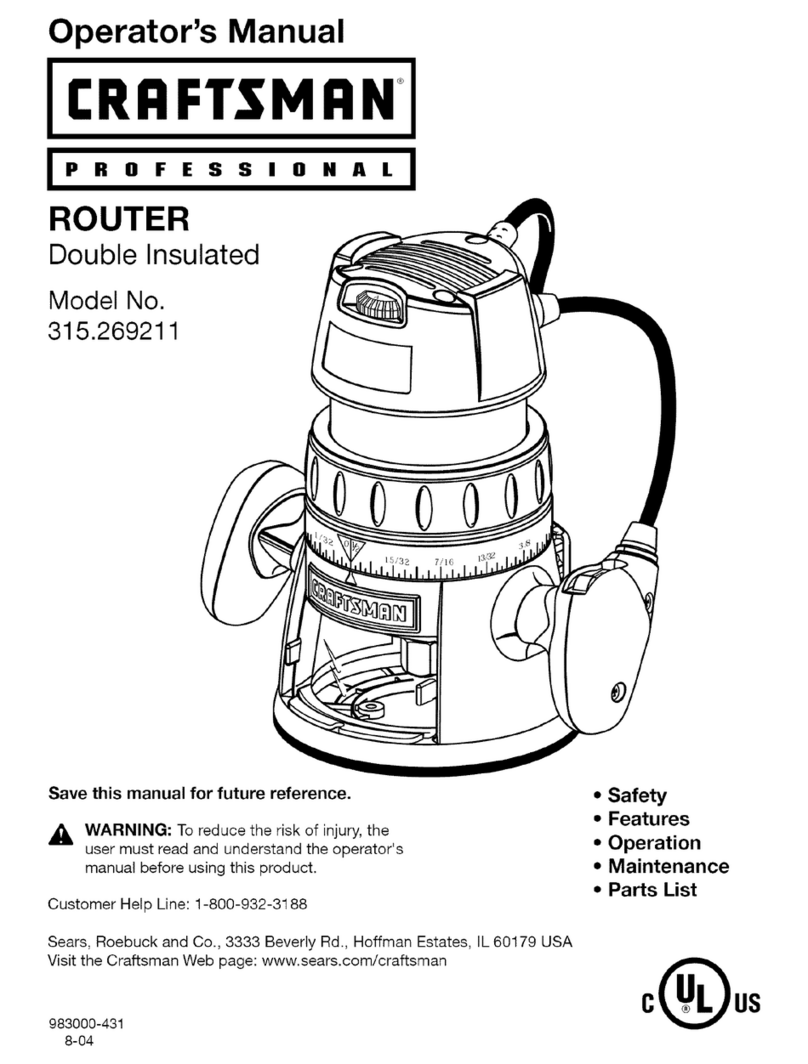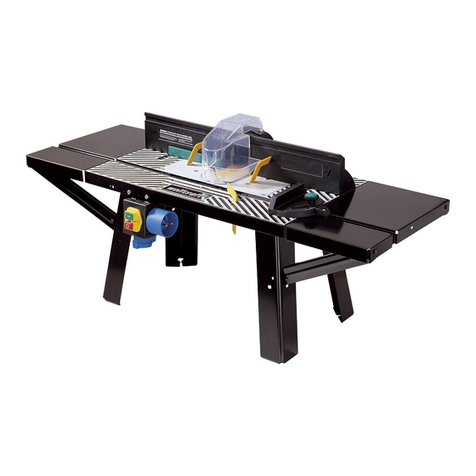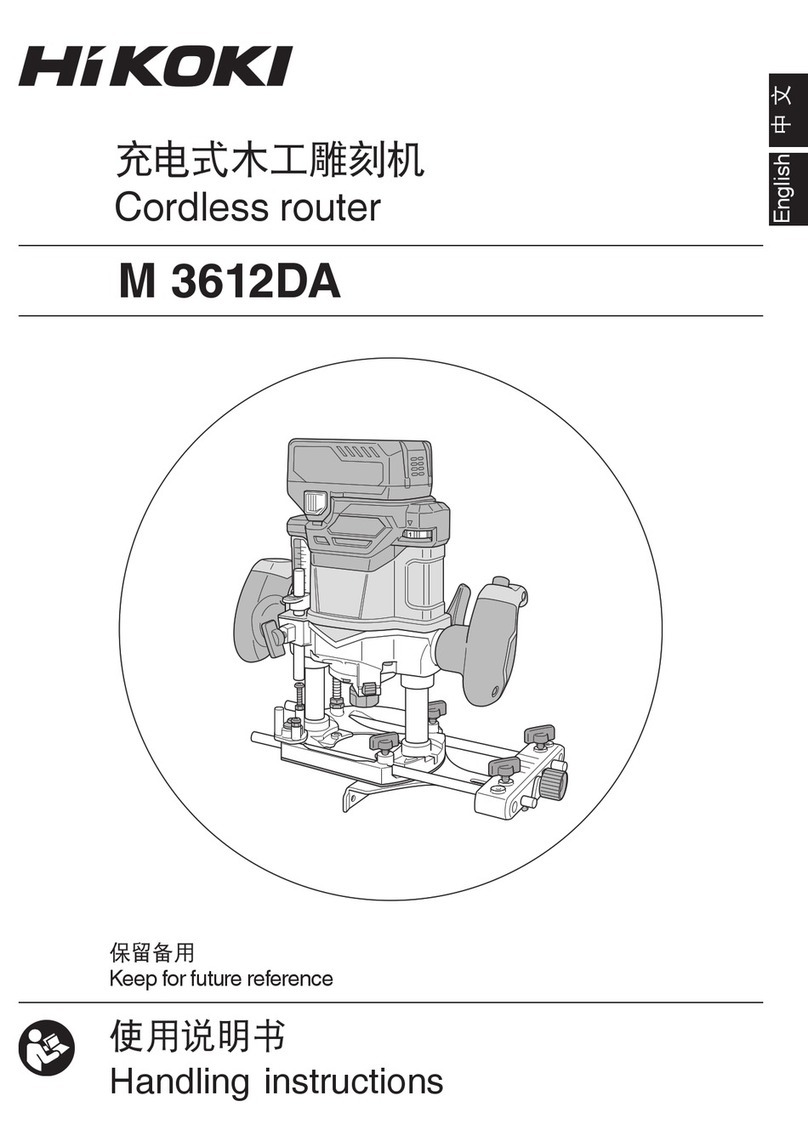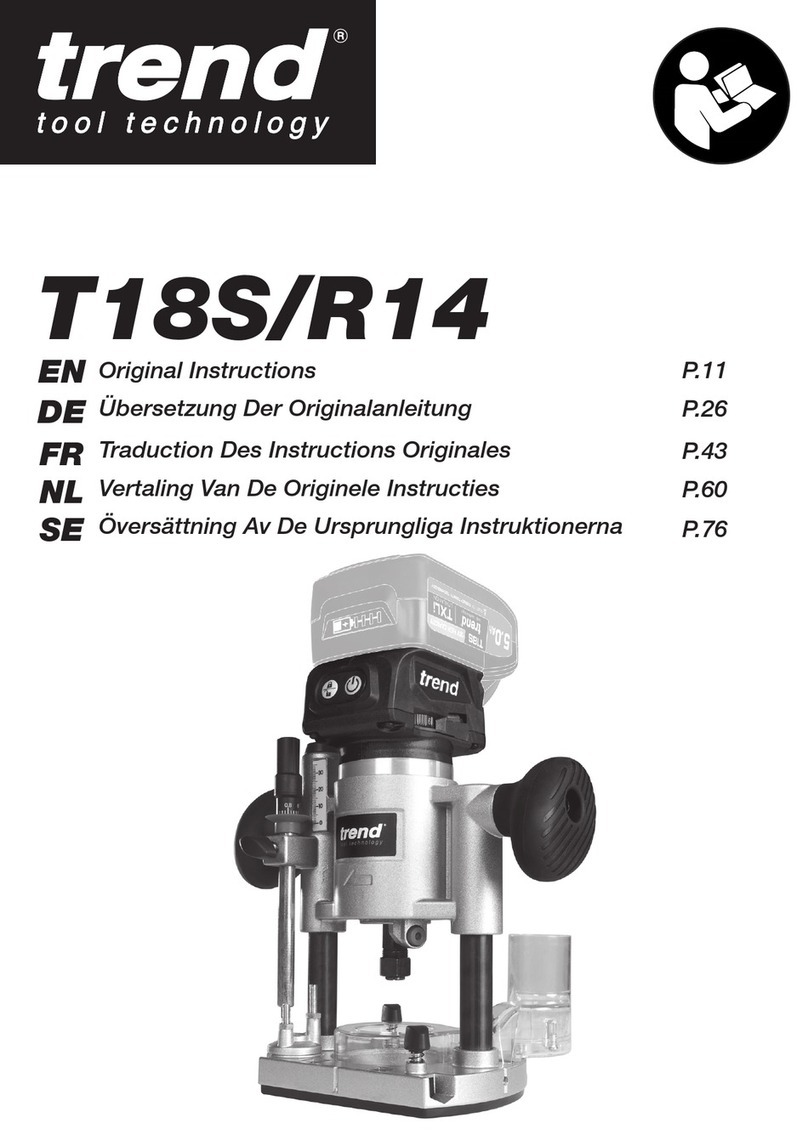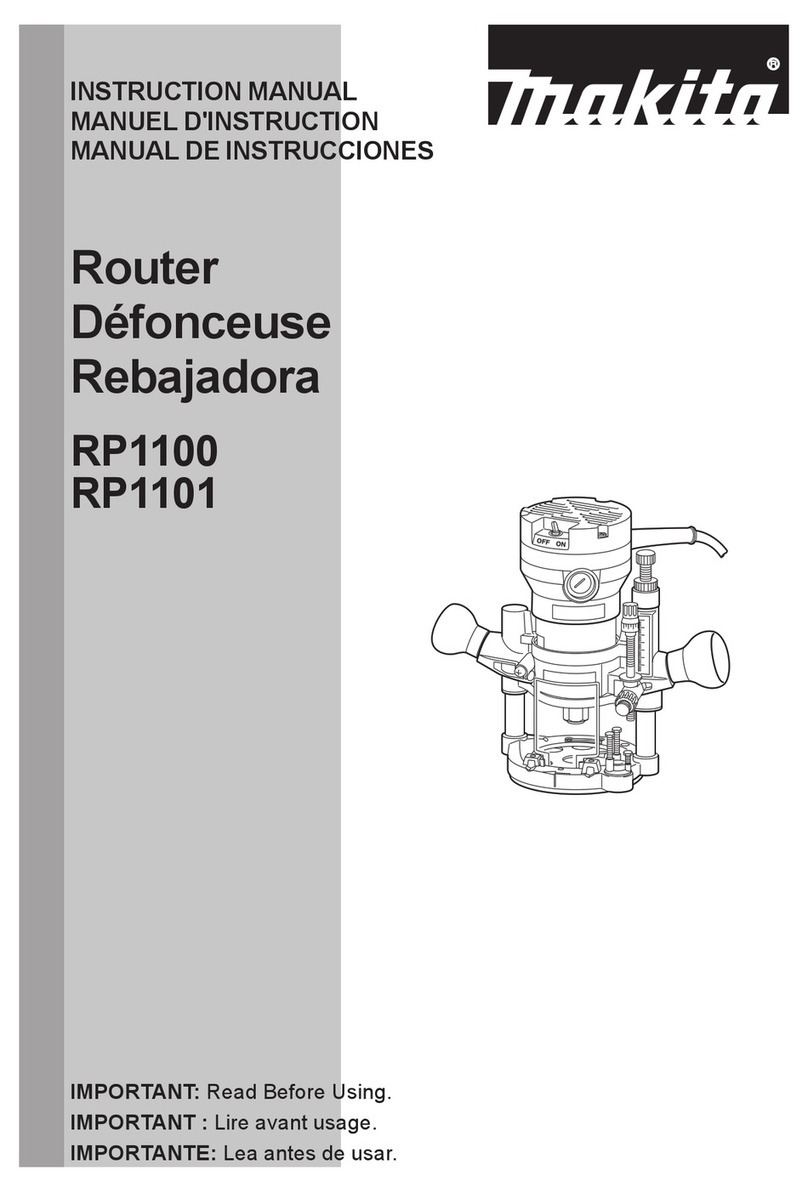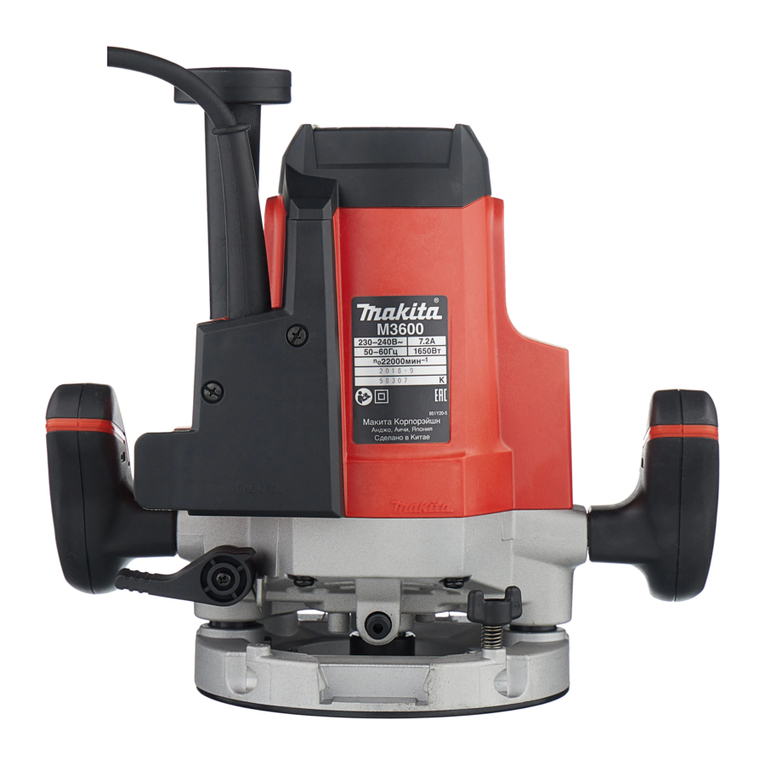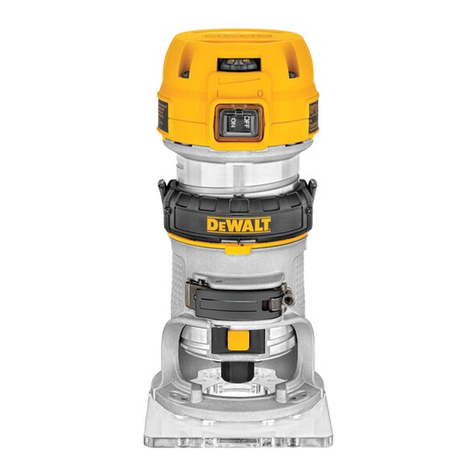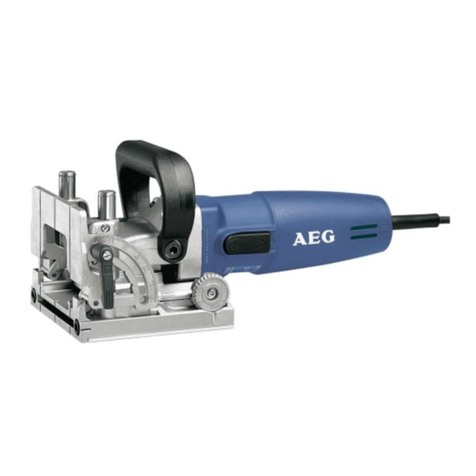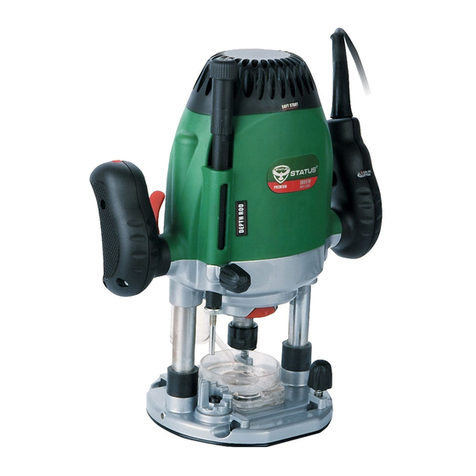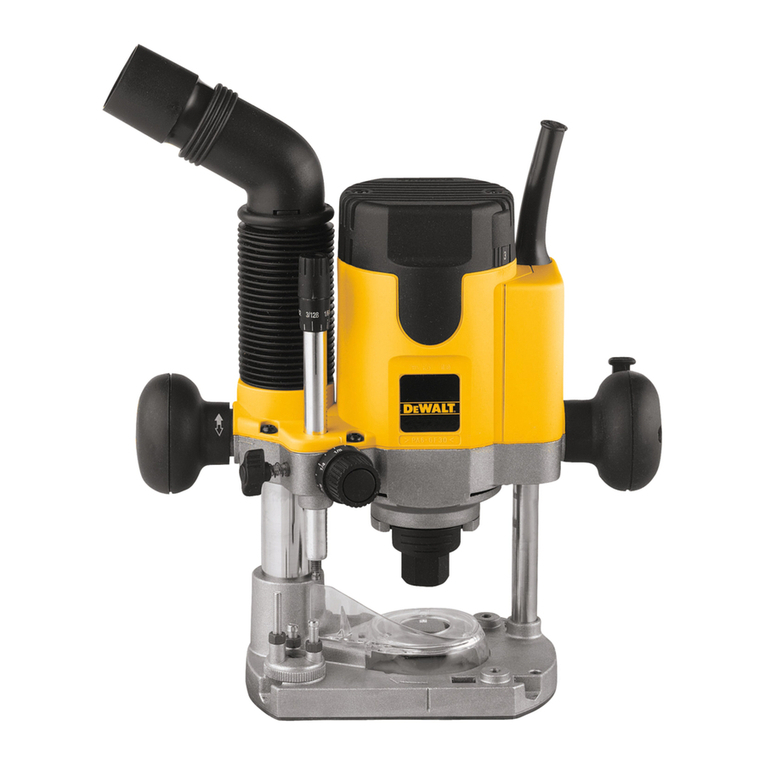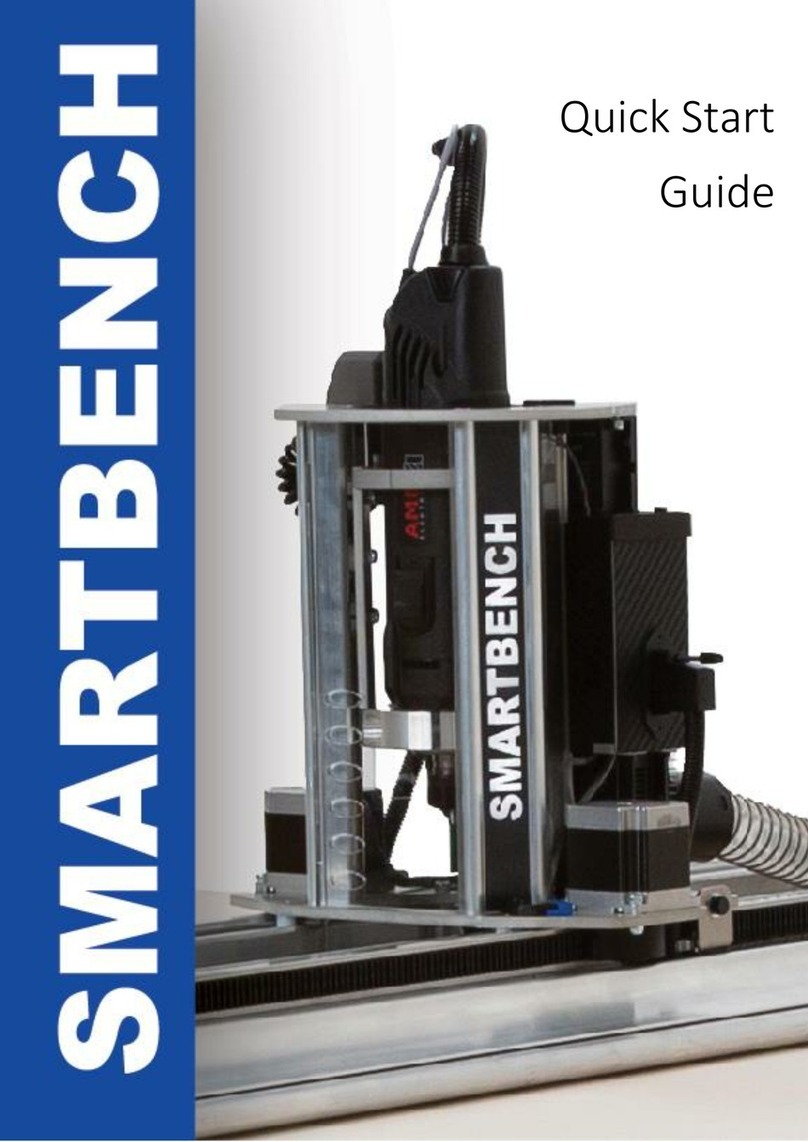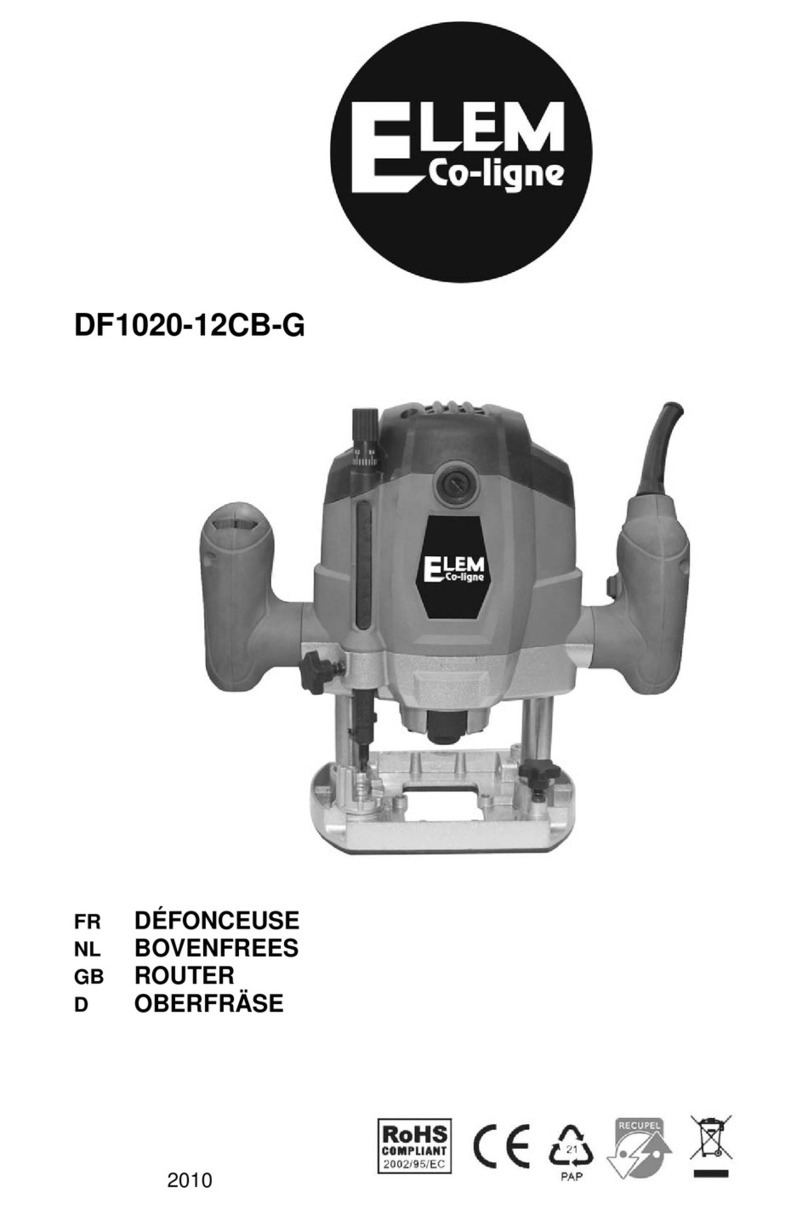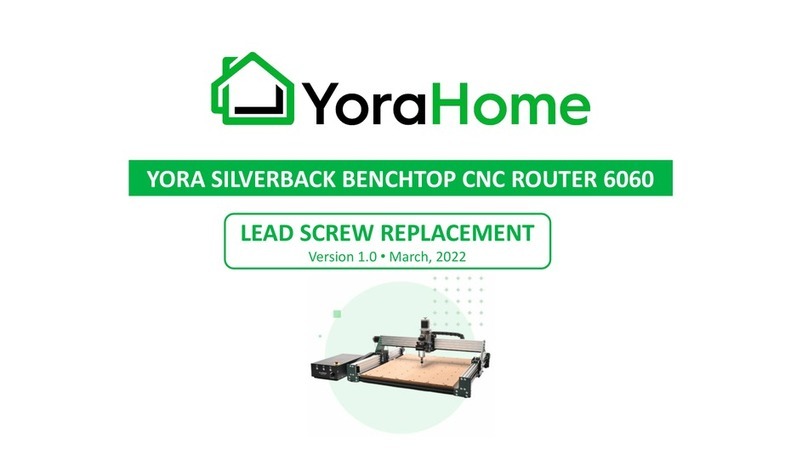
Personal Safety
Stay alert, watch what you are doing and
use common sense when operating a
power tool. Do not use tool while tired or
under the influence of drugs, alcohol, or
medication. A moment of inattention while
operating power tools may result in serious
personal injury.
Dress properly. Do not wear loose clothing
or jewelry. Contain long hair. Keep your
hair, clothing, and gloves away from
moving parts. Loose clothes, jewelry, or
long hair can be caught in moving parts.
Keep handles dry,clean and free from oil
and grease.
Avoid accidental starting. Be sure switch
is "OFF" before plugging in. Carrying tools
with your finger on the switch or plugging
in tools that have the switch "ON" invites
accidents.
Remove adjusting keys or wrenches
before turning the tool "ON". Awrench or a
key that is left attached to a rotating part of
the tool may result in personal injury.
Do not overreach. Keep proper footing
and balance at all times. Proper footing and
balance enables better control of the tool in
unexpected situations.
Use safety goggles (head protection).
Wear safety goggles (must comply withANSI
Standard Z87.1) at all times. Wear non-slip
footwear and ahard hat, if appropriate. Also,
use face or dust mask if cuttingoperation is
dusty, and ear protectors (plugs or muffs)
during extended periods of operation.
Tool Use and Care
Use clamps or other practical way to
secure and support the workpiece to a
stable platform. Holding the work by hand
or against your body is unstable and may lead
to loss of control.
Do not force tool. Use the correct tool for
your application. The correct toolwill do the
job better and safer at the rate for which it is
designed.
Do not use tool if switch does not turn it
"ON" or "OFF". Any tool that cannot be
controlled with the switch is dangerous and
must be repaired.
Disconnect the plug from the power
source before making any adjustments,
changing accessories, or storing the tool.
Such preventive safety measures reduce the
risk of starting the tool accidentally.
Keep guards in place. Maintain the guards in
working order and in proper adjustment and
alignment.
Store idle tools out of reach of children
and other untrained persons. Tools are
dangerous in the hands of untrained users.
Never leave tools running unattended.
Turn the power OFF. DO NOT leave tool
until it comes to a complete stop.
Maintain tools with care. Keep cutting
tools sharp and clean. Properly maintained
tools with sharp cutting edges are less likely
to bind and are easier to control. Any
alteration or modification is a misuse
and may result in a dangerous condition.
Check for damaged guards or parts,
misalignment or binding of moving parts,
breakage of parts, and any other condition
that may affect the tool's operation. If
damaged, have the tool properly repaired
or replaced before using. Many accidents
are caused by poorly maintained tools.
Develop aperiodic maintenance schedule
for your tool.
Use only accessories that are
recommended by the manufacturer
for your model. Accessories that may
be suitable for one tool may become
hazardous when used on another tool.
Service
Tool service must be performed only
by qualified repair personnel. Service or
maintenance performed by unqualified
personnel could result in a risk ofinjury. For
example: internal wires may be misplaced or
pinched, safety guard return springs may be
improperly mounted.
When servicing a tool, use only identical
replacement parts. Use of unauthorized
parts or failure to follow Maintenance
Instructions may create a risk of electric
shock or injury. Certain cleaning agents such
as gasoline, carbon tetrachloride, ammonia,
etc. may damage plastic parts.
